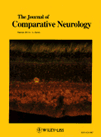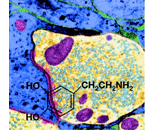![]() Save Article to My Profile
Save Article to My Profile
![]() Download Citation
Download Citation
Abstract | References | Full Text: PDF (2863k) | Related Articles
|
Article
*Correspondence to Manfred Caeser, Brain Research Institute, August-Forel Strasse 1, CH-8029 Zürich, Switzerland
Accepted: 21 December 1990
10.1002/cne.903070109 About DOI |



 -aminobutyric-acid
(GABA) cells were also present in slice cultures and exhibited a
strikingly similar dendritic appearance at the light microscopic level.
Moreover, GABA-immunoreactive cell bodies and presynaptic terminals
could be identified at the electron microscopic level; they expressed
typical symmetric synaptic contacts with cell bodies and dendrites. The
course of the intrinsic hippocampal fiber pathways - the
mossy fibers, Schaffer collaterals, and alveus-was generally retained
in vitro. Additional aberrant fiber projections could be identified.
Finally, three types of nonneuronal cells could be distinguished on the
basis of immunocytochemical methods.
-aminobutyric-acid
(GABA) cells were also present in slice cultures and exhibited a
strikingly similar dendritic appearance at the light microscopic level.
Moreover, GABA-immunoreactive cell bodies and presynaptic terminals
could be identified at the electron microscopic level; they expressed
typical symmetric synaptic contacts with cell bodies and dendrites. The
course of the intrinsic hippocampal fiber pathways - the
mossy fibers, Schaffer collaterals, and alveus-was generally retained
in vitro. Additional aberrant fiber projections could be identified.
Finally, three types of nonneuronal cells could be distinguished on the
basis of immunocytochemical methods.


